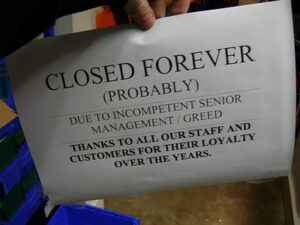No one is happy about the current inflation problem. While it’s easy to blame the person in the White House for whatever ails the country, that takes the blame away from the real inflationary drivers. Community colleges need a plan to deal with persistent inflation because it looks like it will be here for a while.
Right now, there are a small handful of major actors on inflation, which is hovering around 8.3% for the first nine months of the year. It’s also important to remember that inflation is a global issue; it’s not just affecting the United States.
Labor shortages drive up costs
Rising labor costs have a big impact on inflation, and right now, cheap labor is hard to come by. The push for a $15 minimum wage is not as impactful as one might think. Labor shortages are more likely to drive labor costs higher. And the lack of workers is causing employers to offer a better hourly wage to the shrinking labor pool.
Rising labor costs will also make it more difficult for would-be students to justify going to college. Why should they enroll in classes when they can make as much as they could with a college degree? To combat this, community colleges are going to need to come up with better justifications (than money) to pull people into the classrooms. Don’t get me wrong; the money also has to be there, but with their current strategies, community colleges aren’t going to compete on income alone.
From a policy perspective, the White House doesn’t have any direct control over the size of the labor pool. Right now, the US is near full employment. Virtually everyone who wants a job has one, and there are 10 million open positions in the US right now. So, possible strategies to filling unmet needs include coaxing non-participants into the labor market; filling vacancies with immigrants; and technological improvements that increase efficiency and/or reduce the need for workers.
Community colleges have some influence over coaxing non-participants into the labor market. They may also possibly influence technological improvements that increase efficiency. Better educated students may also reduce the need for additional workers. Immigration seems to be a non-starter right now, and immigration merely shifts labor problems from one part of the world to another.
Inflation will drive energy costs
The cost of energy is also driving up inflation. Whether you’re talking about gasoline, heat, electricity, or any other fuel, energy costs are on the rise. Supply shortages related to the war in Ukraine will have a major influence on the cost of energy around the world. Supply diversions to one area of the world will decrease energy supplies in other places.
Community colleges have a role here. By offering alternative energy programs, community colleges can increase the number of qualified energy workers, and grow the market for alternative energy sources. That can take the pressure off global petroleum supplies. It can also reduce energy dependence on other countries and reduce energy costs locally.
Additionally, this is possibly the best reason for community colleges like WCC to drive down their energy consumption. WCC has reigned supreme as the energy cost leader among Michigan’s community colleges. Making efficiency improvements like replacing aged-out HVAC systems, windows and doors, and old lighting should reduce WCC’s energy costs. (Lower energy costs should translate into either lower attendance costs for students or another Vice President.)
Rising interest rates will drive inflation, lower enrollment at community colleges
Rising interest rates also cause inflation. Currently, mortgage interest rates are approaching 8%. Interest rates for other loan products (personal loans, credit cards, car loans, etc.) range between 4.5% and 16%, depending upon the loan and the borrower’s credit score.
Interest rates will keep would-be students out of school, especially if they’re trying to juggle multiple lines of debt. The key for community colleges will be to hold the line on tuition and fees. Rising attendance costs will reduce enrollment. For WCC, that might mean asking the voters (gasp!) to fund construction projects instead of larding project costs off on students.
The new economy – which will likely include inflation rates at above 5% for a while – will pose financial challenges for an administration with a “rich community” mindset. The Board of Trustees must also implement actual oversight mechanisms, which have been almost entirely absent for more than two decades.
Should be interesting. Vote carefully.
Photo Credit: Phillip Pessar, via Flickr

































